There’s no suspense to this narrative: we saw the 2017 total eclipse in its full glory on Monday (Moon Day, fittingly) beginning at about 1:22 p.m. CDT. That’s hindsight, of course. During the 30 minutes before totality, there was no way to know which way the wind would blow, and where it would carry the clouds.
As the Moon slowly ate the Sun, people gathered at the McCracken County Library courtyard for the event.
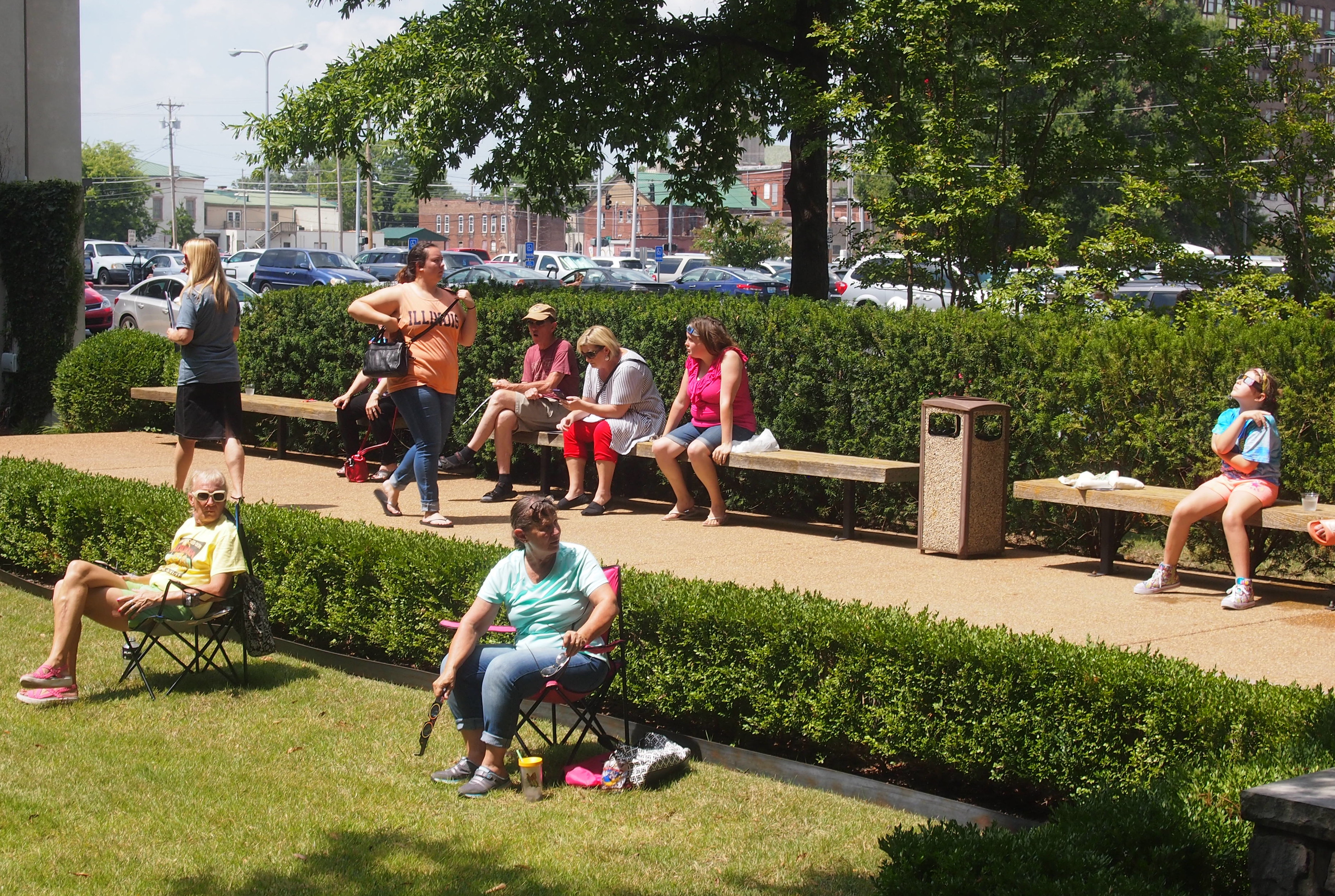
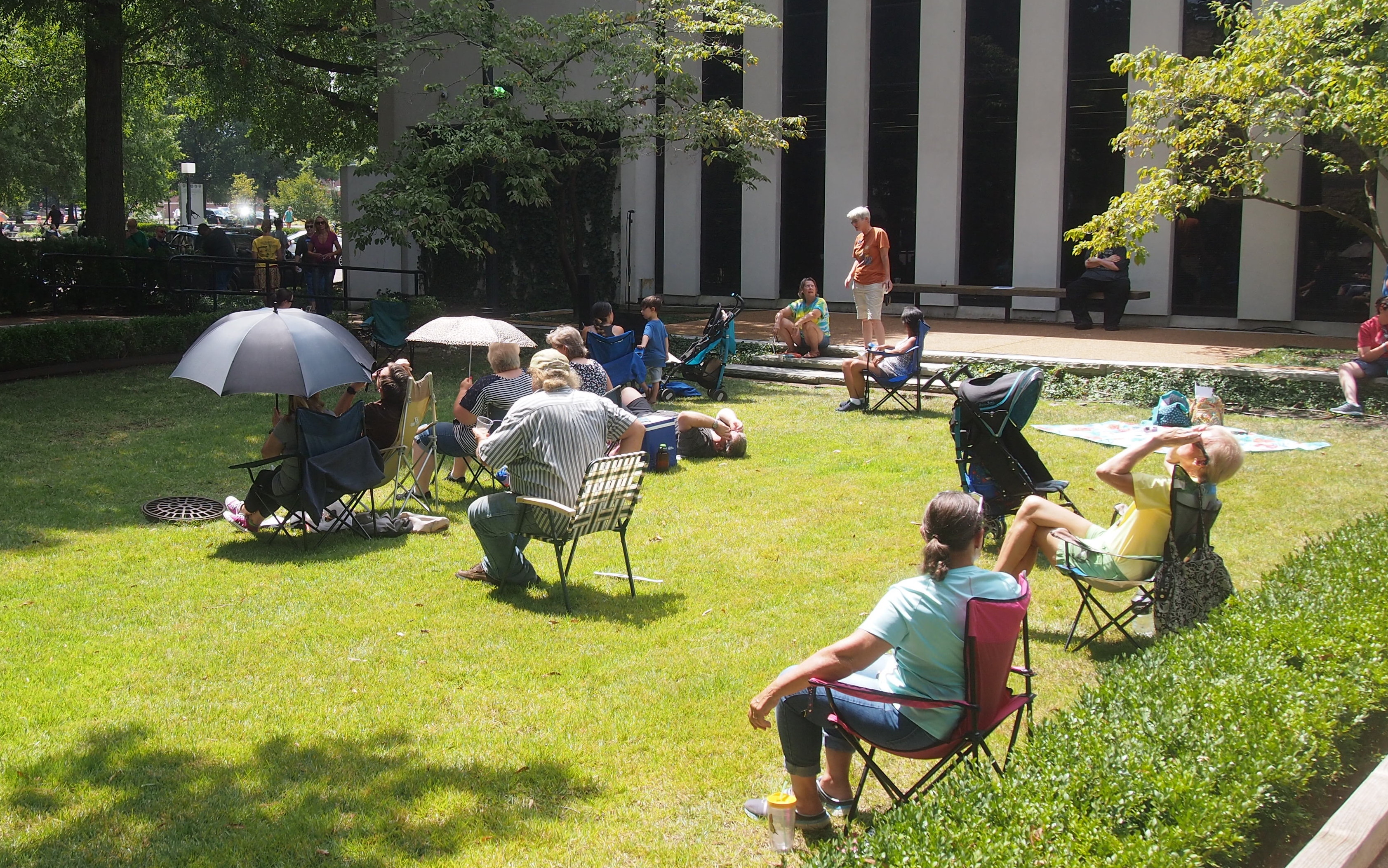 People tried on their glasses.
People tried on their glasses.
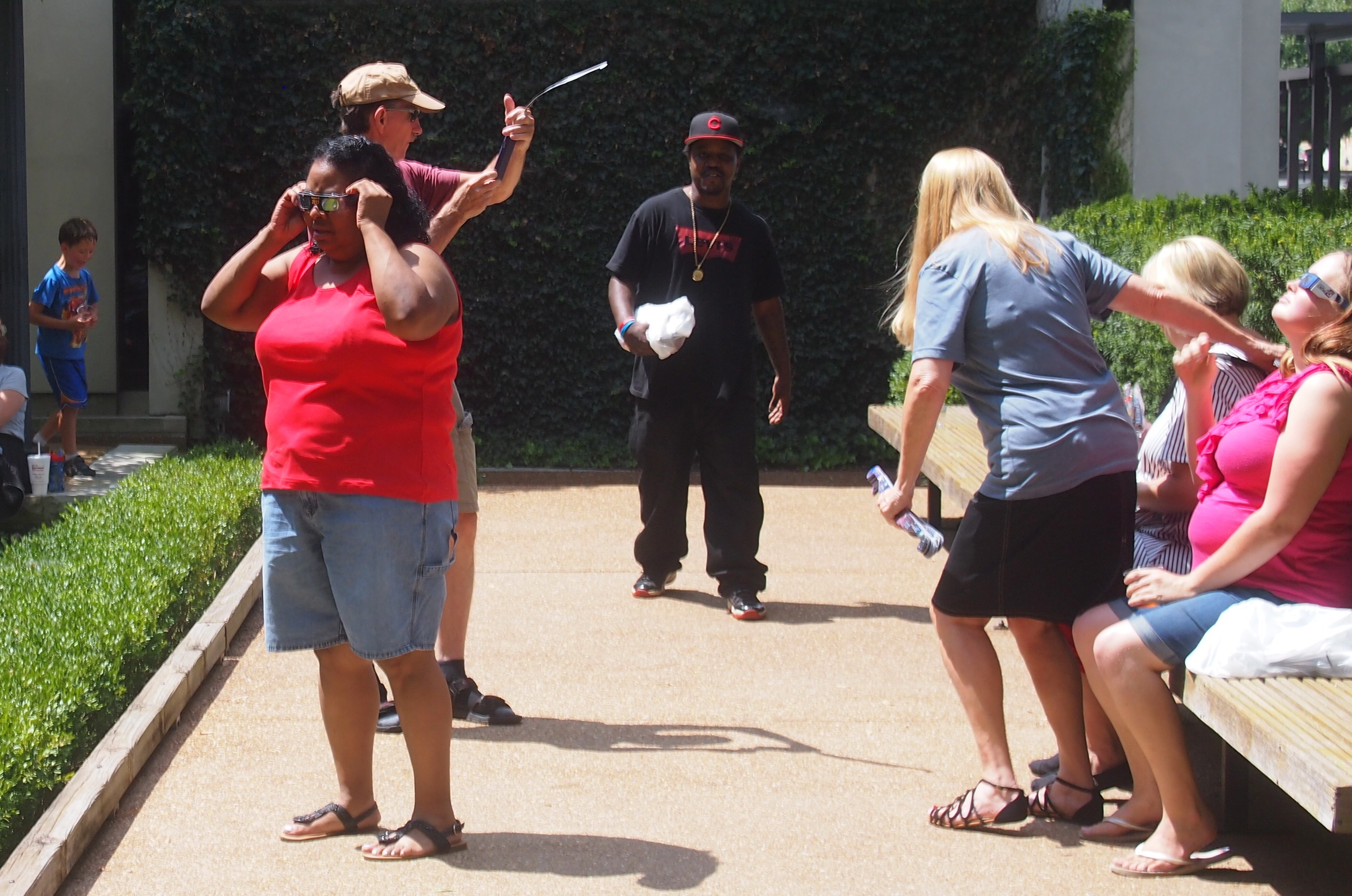 Dudes were stretched out on the grass with their glasses. This dude, anyway.
Dudes were stretched out on the grass with their glasses. This dude, anyway.
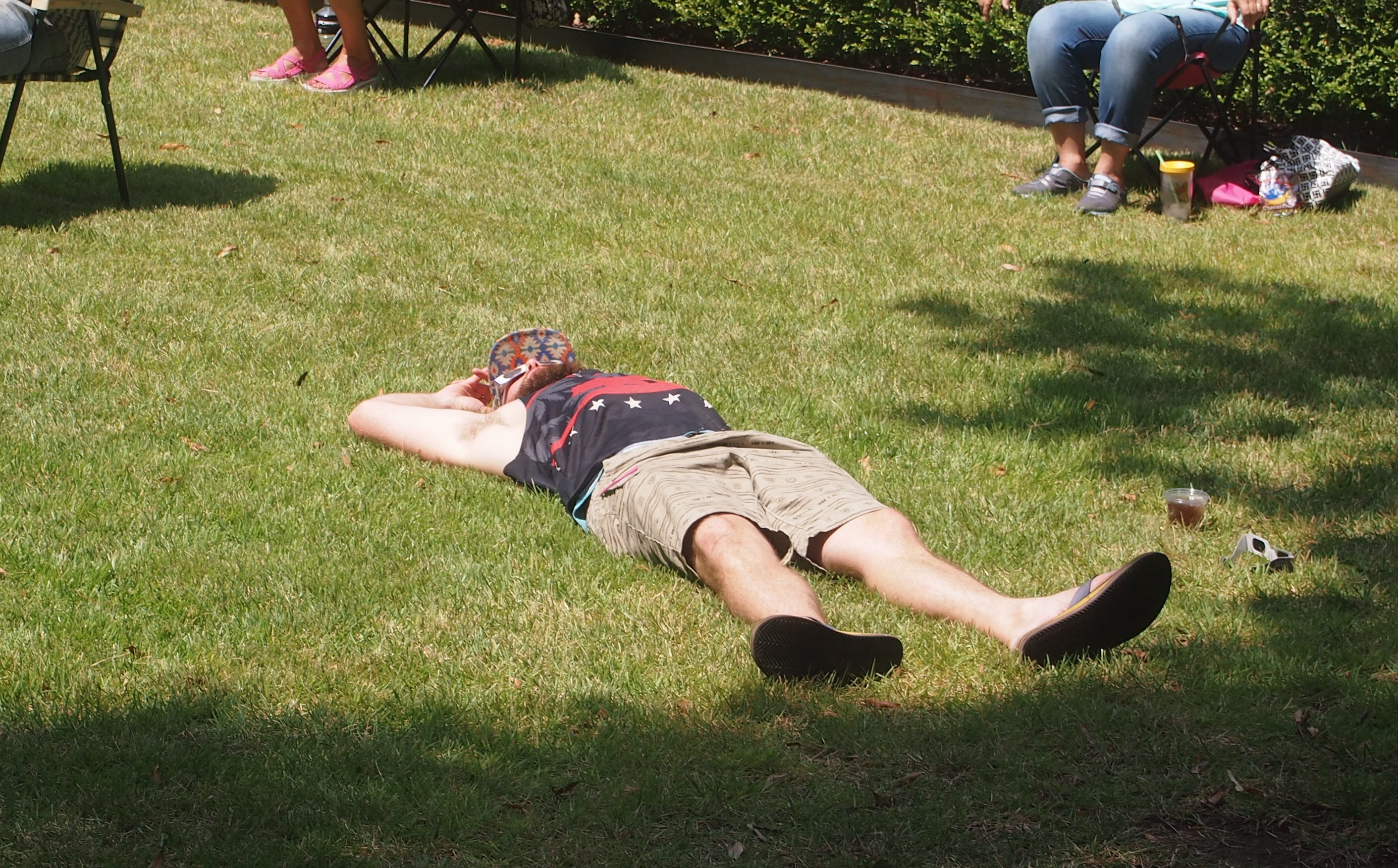 The library was giving away glasses, but also cold water, tea and Moon Pies.
The library was giving away glasses, but also cold water, tea and Moon Pies.
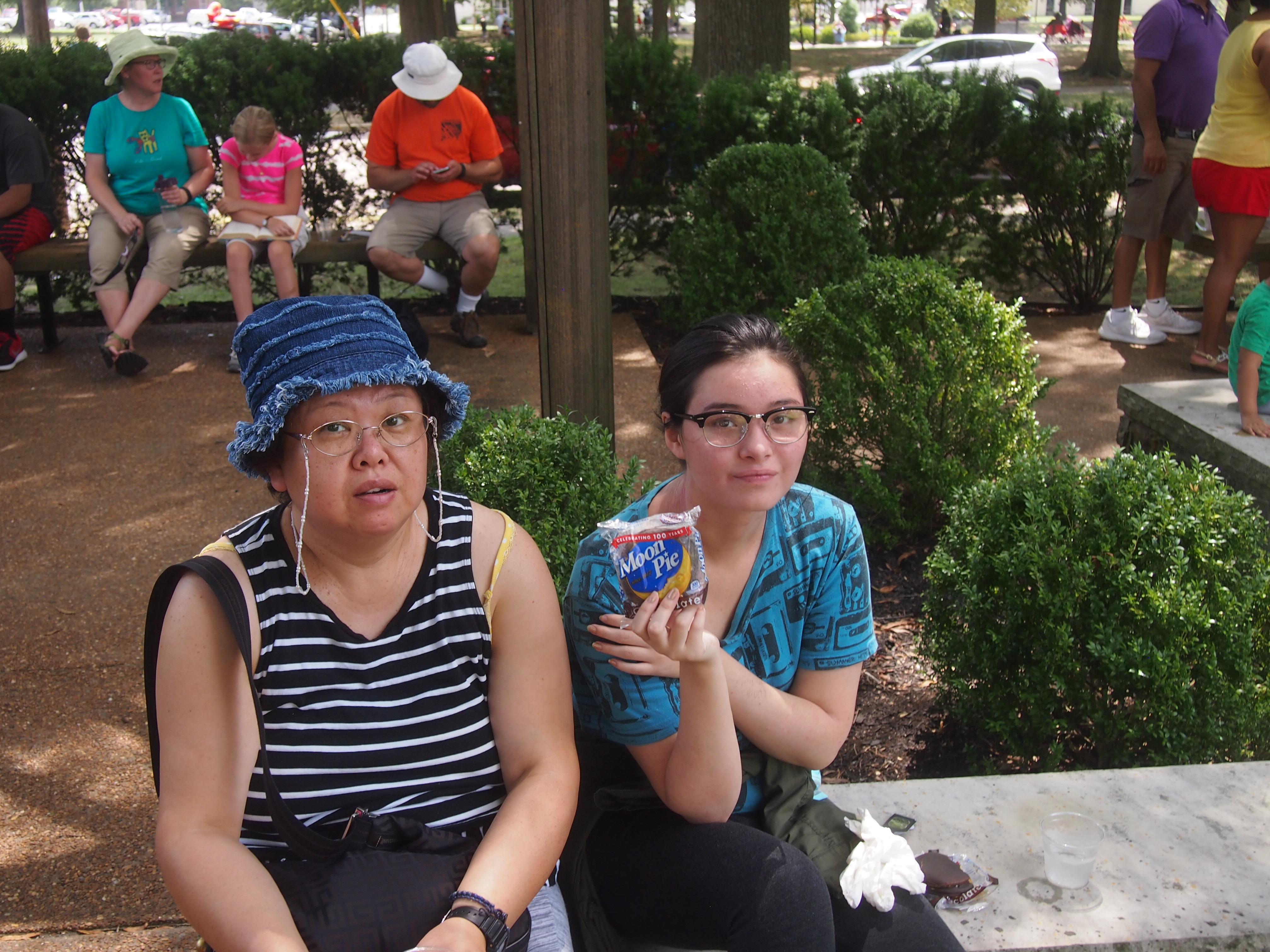 We stayed at the courtyard a while, but then I went over to the plaza across Washington St. to see whether the vantage was better. The sky was more open there, and so we all went.
We stayed at the courtyard a while, but then I went over to the plaza across Washington St. to see whether the vantage was better. The sky was more open there, and so we all went.
Later I found out that the place is formally called Dolly McNutt Memorial Plaza, named after the first female mayor of Paducah, who was in office during the 1970s. The plaza is a square city block, ringed on four sides by trees but open to the sky inside, and featuring memorials to various branches of the armed forces.
A sidewalk inside the plaza forms a smaller square around an oval-ish fountain at the center. On Monday afternoon, kids were splashing around in the fountain — which looked pretty scummy, actually — just like they would on any warm day.
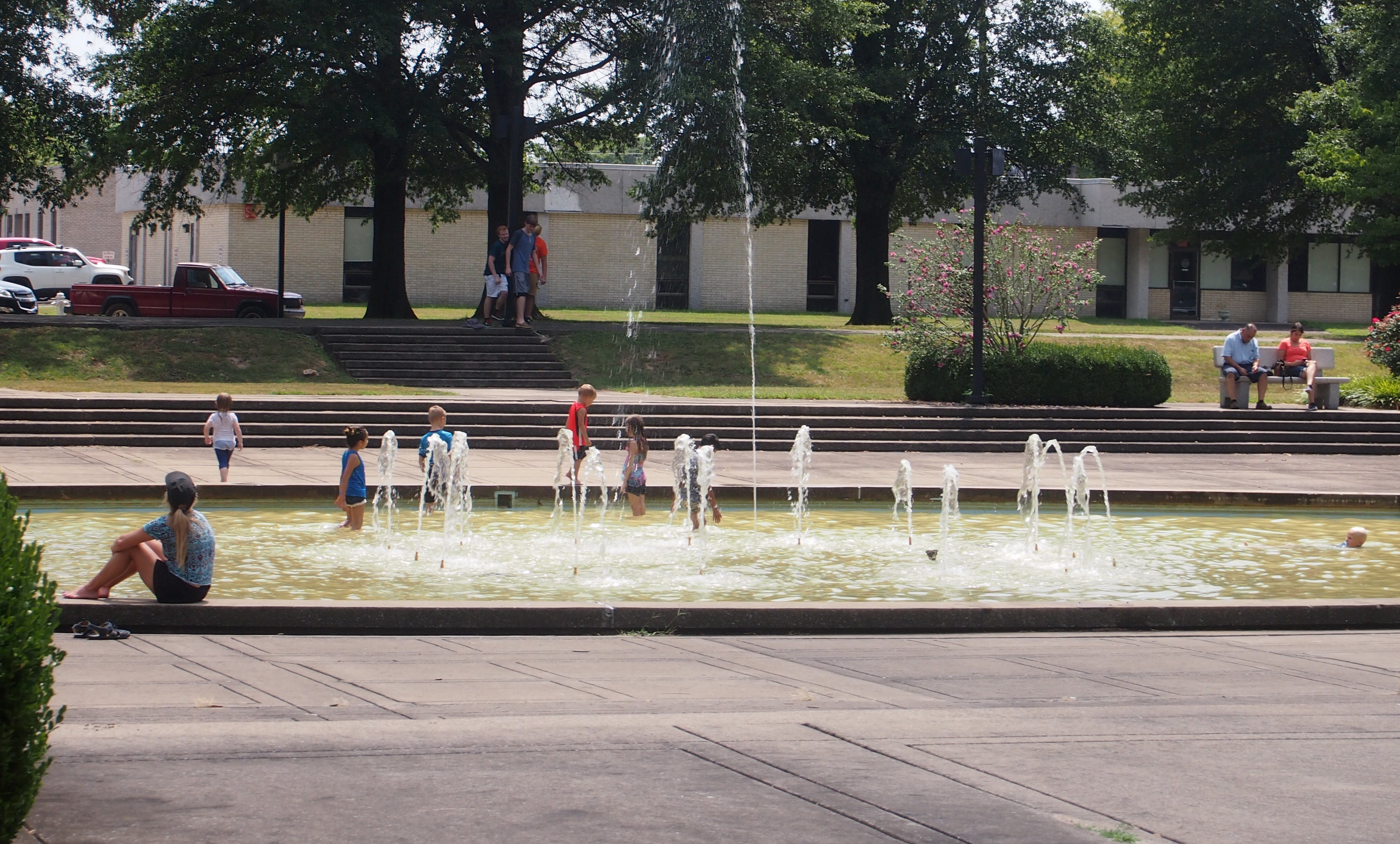 At that moment, people were looking to the sky all around the plaza.
At that moment, people were looking to the sky all around the plaza.
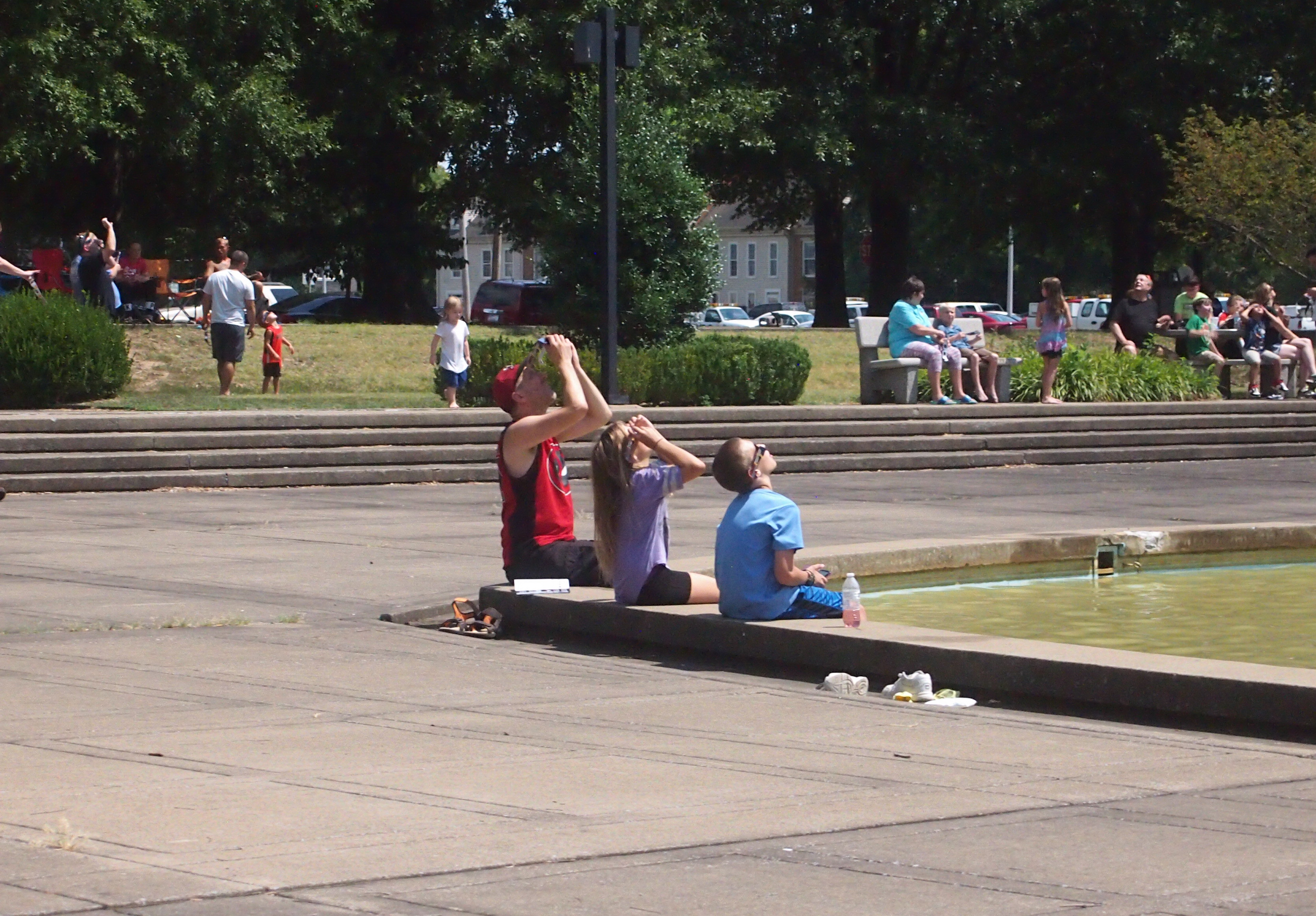
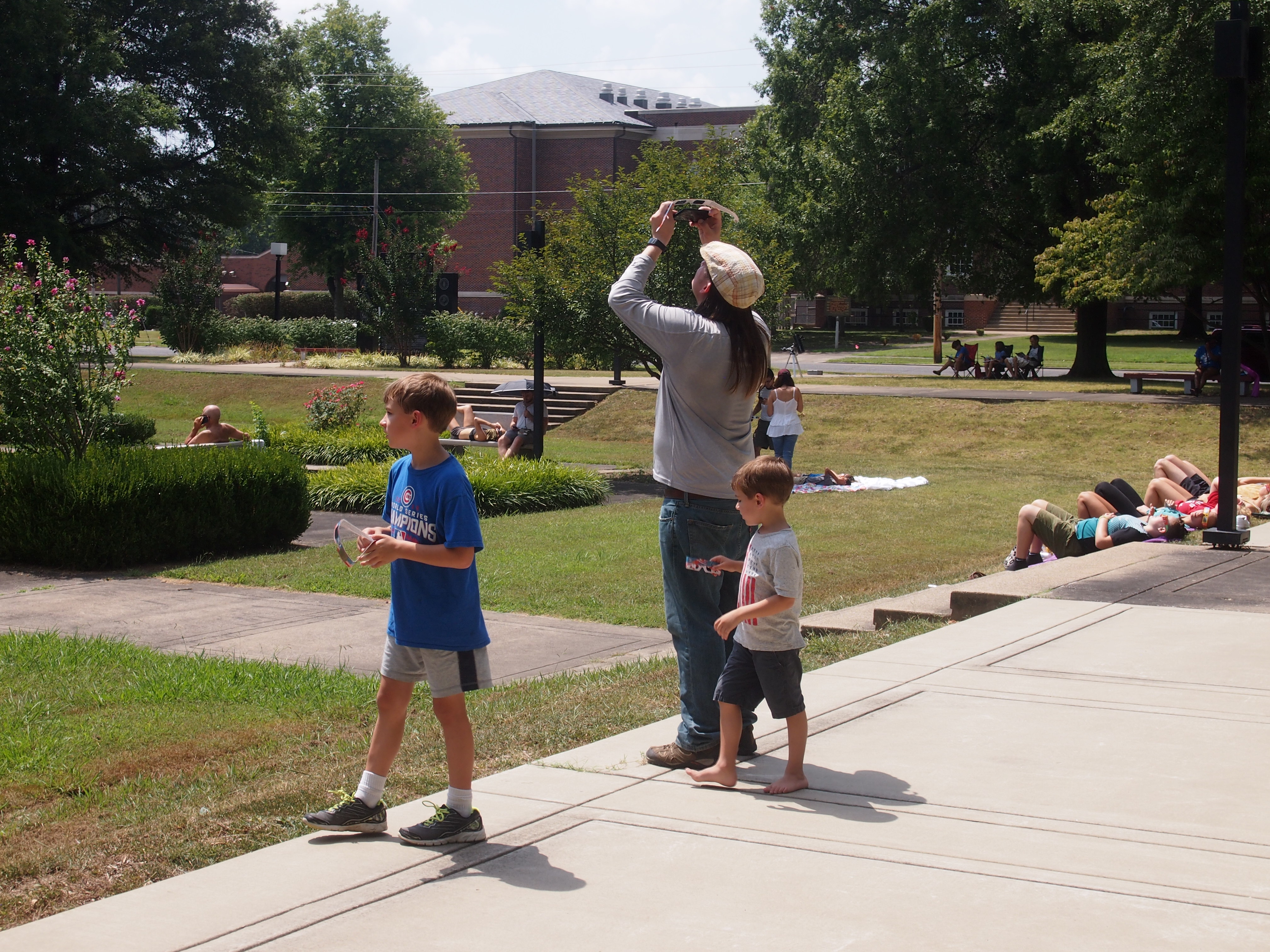 At first, we sat under some of the trees, since it was still fairly hot. The curious shadows of the leaves were visible.
At first, we sat under some of the trees, since it was still fairly hot. The curious shadows of the leaves were visible.
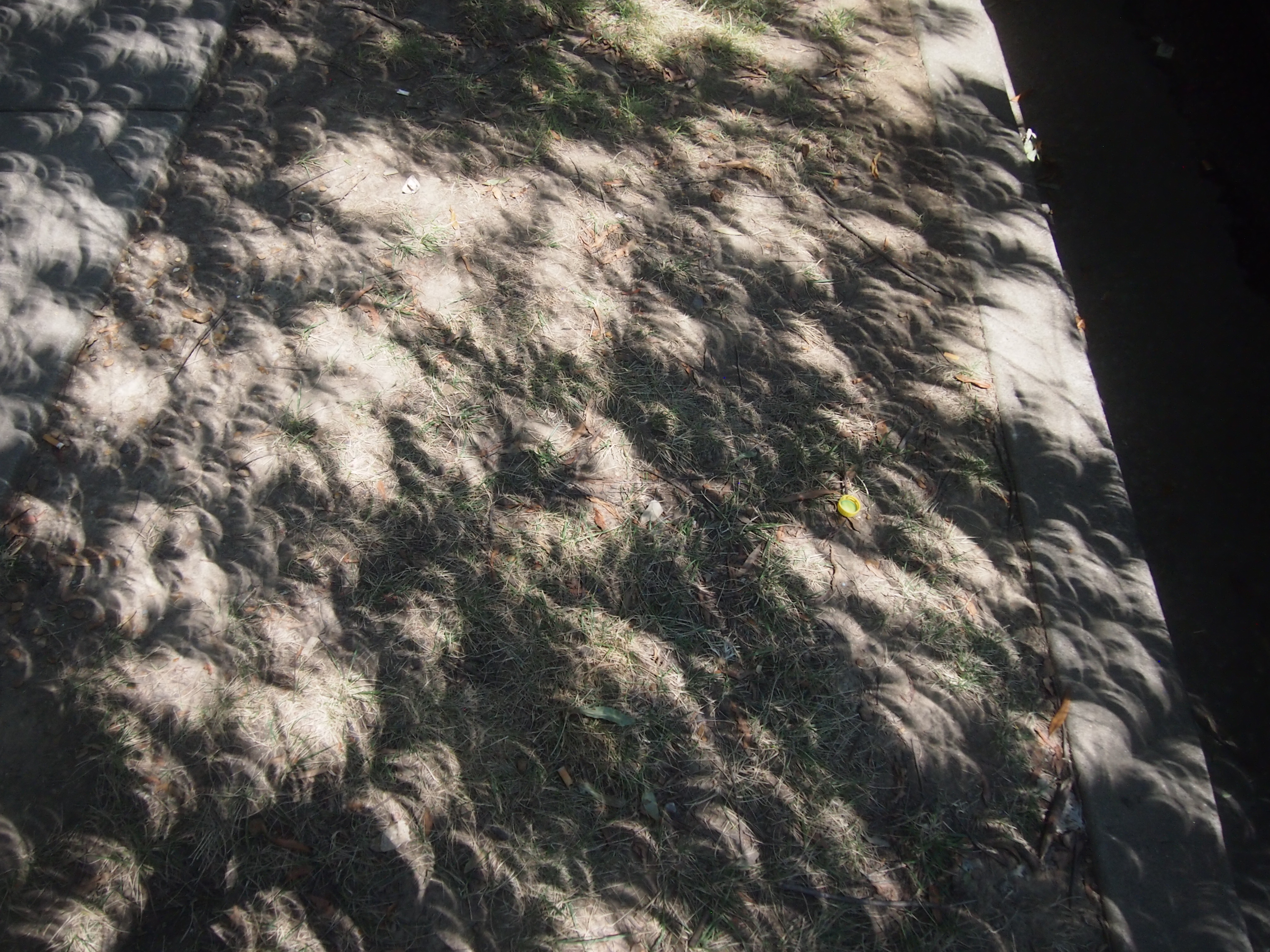 Soon we moved to the short set of steps surrounding the fountain and sat there. By then the sky was dimming and the air was noticeable cooler, maybe 10 degrees F. It wasn’t exactly a comfortable spot, but good enough for the minutes leading up to totality.
Soon we moved to the short set of steps surrounding the fountain and sat there. By then the sky was dimming and the air was noticeable cooler, maybe 10 degrees F. It wasn’t exactly a comfortable spot, but good enough for the minutes leading up to totality.
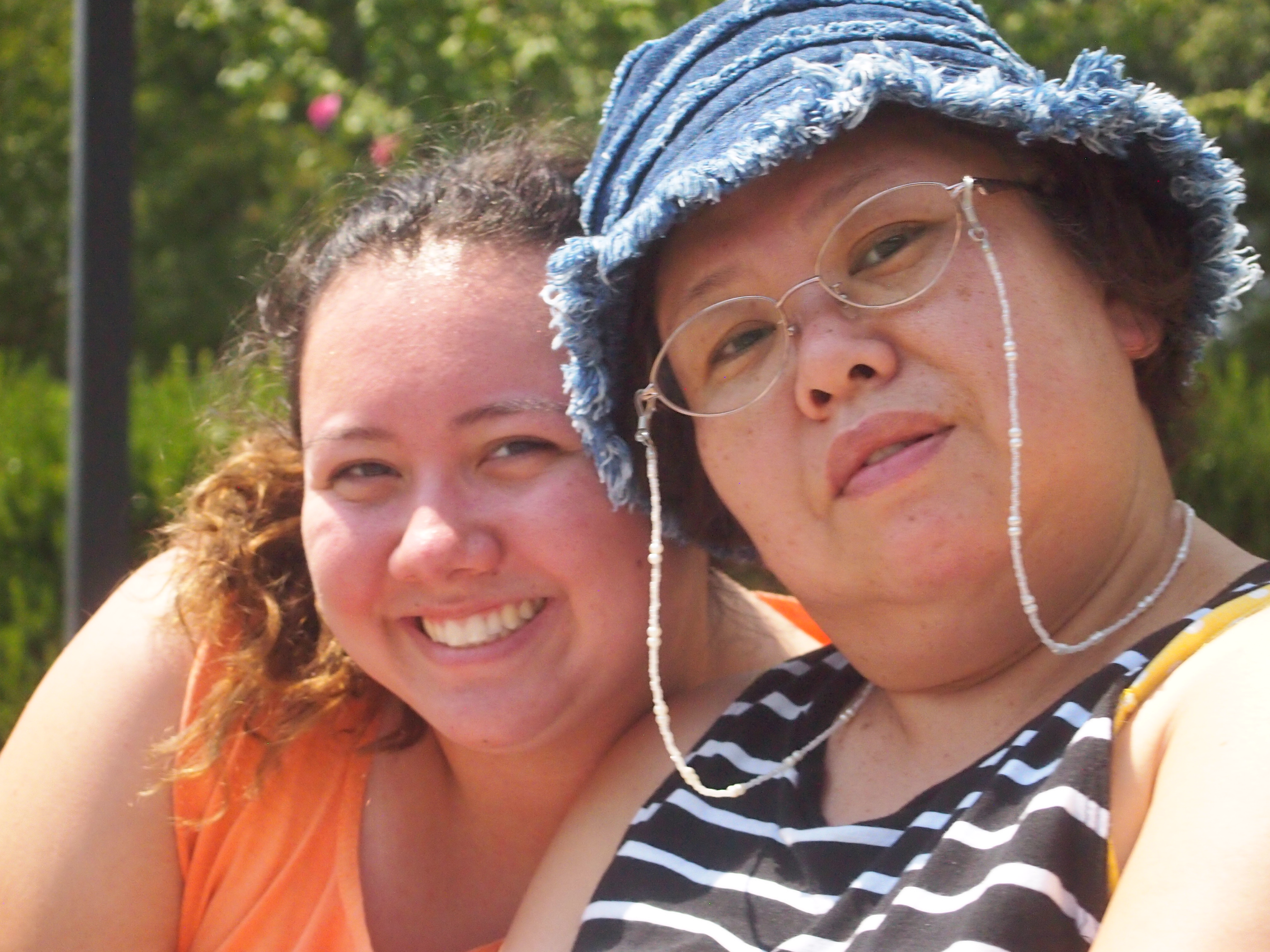 The clouds had held back. I knew we were going to see totality unobscured from Dolly McNutt Memorial Plaza, at about 37.083543 degrees North, 88.598450 degrees West, according to calculations I later made using Google Maps, so take that for what it’s worth.
The clouds had held back. I knew we were going to see totality unobscured from Dolly McNutt Memorial Plaza, at about 37.083543 degrees North, 88.598450 degrees West, according to calculations I later made using Google Maps, so take that for what it’s worth.
The dimming of the sky proceeded, unlike any dusk. I saw streetlights come on, and a flock of birds head out from a tree. The last of the crescent sun, seen through our glasses, dwindled to nothing. Then it happened. Glasses came off, people in the plaza mostly expressed themselves without words, cheering and whooping and even clapping, and the show was on. We were swept up by it.
Much has been written about totality. A common theme is that photos do it no justice. This is completely correct, even an understatement. The event doesn’t look like its pictures, not even the best images from the best machines. We fool ourselves into thinking that cameras capture images like the eye. A solar eclipse puts the lie to this. For human beings, eyes are the thing.
I’d never seen anything like it. The black disk — the corona’s tendrils — wisps — curls — glowing ringlets — luminous strands — and the surrounding darkness where sunlight should be — were awesome. As in, inspiring awe.
It wasn’t a religious experience. It didn’t make me appreciate the wonders of the cosmos any more than I did before, which is a lot. It didn’t change my life in any fundamental way. But the black sun and wondrous corona did make me very glad to be alive and fortunate enough to see such majesty.